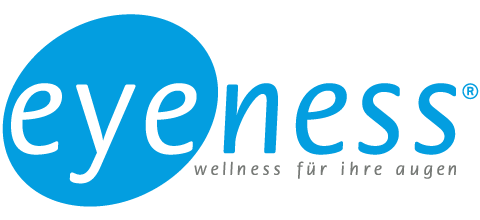Myopia Management
Myopia Management
High myopia and the associated length growth of the eye is an important risk factor for later eye diseases.
The number of people with myopia has increased massively in recent years. This growth in the length of the eyes represents an increased health risk in the long term.

The risk of retinal detachment, as an example, quadruples already at 3 diopters and is even 16 times higher at over 6 diopters. The adjacent table shows the increasing risk of higher myopia. An actual trigger for myopia is not yet known. However, there are factors involved in myopia development. Test now the risk of developing a high myopia on myopiacare.org
Can this development be stopped?
Yes! For years, extensive studies have been carried out in the field of myopia control. With early countermeasures it is possible to slow down the negative development significantly. The following table shows a summary of the procedures for myopia control and their effectiveness from over 30 scientific studies:

Myopia Management with contact lenses
New soft Specialty defocus contact lenses slow down the increase in myopia by up to 45%. We use the misight (CooperVision), a daily disposable lens which is replaced daily by a fresh contact lens, or the Mylo (mark’ennovy) monthly lenses. They correct myopia, but not astigmatism.
Orthokeratology is currently the most effective way to control myopia. These lenses are worn only during sleep and change the cell layers in the eye overnight so that people with myopia can see sharply during the day – without contact lenses or glasses. Myopia up to 8.0dpt and astigmatism up to 4.0dpt can be corrected. Further advantages are:
- Swimming, sports without restriction
- minimum risk of loss
- no dry eyes
- no foreign bodies under the contact lenses
- no impairment during hay fever
Orthokeratology have been successfully fitted in the USA and Australia for over 40 years. We ourselves have been practicing this procedure successfully since 2003 and are thus among the pioneers in Europe.
Myopiy Management with glasses
The award-winning MIYOSMART defocus-lens with patented D.I.M.S. technology was developed in collaboration between Hoya and Hong Kong Polytechnic University in 2014. D.I.M.S. stands for Defocus Incorporated Multiple Segments.
The structure of the lens enables the slowing down of the eye’s length growth by 60% and offers clear vision. The lens is similar to a conventional single vision lens when worn.
MiYOSMART is a single vision lens whose front surface contains hundreds of small segments, all of which map a myopic defocus. When looking through a pupil-sized area, a sharp and defocused image is thus always guaranteed in the eye.

Myopie Management mit Atropin
The increase in myopia can also be slowed down with the help of atropine (belladonna). Atropine eye drops have long been used as a medication to dilate pupils. What is new, however, is the use of atropine to slow eye length growth. Such therapy is called “off-label”. This means that the drug has not yet been approved for this use by the Swiss Medicines Agency and there is not yet any obligation on the part of the health insurance funds to provide benefits.
The mechanism of action of atropine to slow down eye length growth is not yet known and is dose-dependent. The higher the dosage, the more growth is slowed down. The ophthalmologist in charge decides which dosage to use, in consultation with your paediatrician. Unfortunately, atropine has the side effect of enlarging the pupil and limiting the ability to see close up when reading. If the side effects are too severe, phototropic progressive addition lenses (PAL) can help. On the other hand, a combination therapy of atropine and optical therapy (glasses or contact lenses) can be used to keep the atropine dosage as low as possible and to combine the effect of both forms of therapy.
Because of the side effects mentioned above, atropine eye drops are mostly used in young children aged 5-9 years. This is because, on the one hand, the handling of contact lenses can still be difficult and, on the other hand, because the physiological reserves for near vision decrease with increasing age.
The drops are administered once a day (in the evening) and are usually used over a period of several years, depending on the course of the disease. Regular appointments for ophthalmological follow-up examinations must be made during the application.

